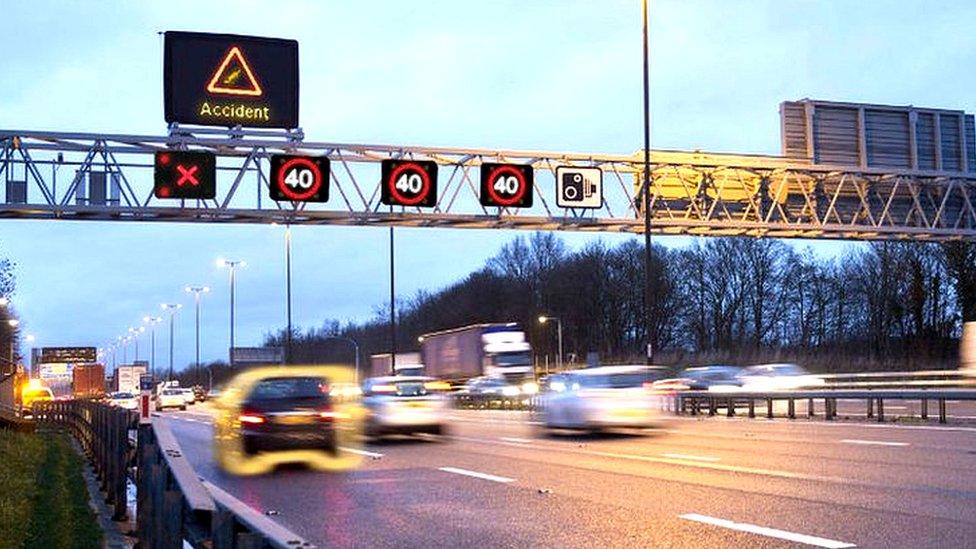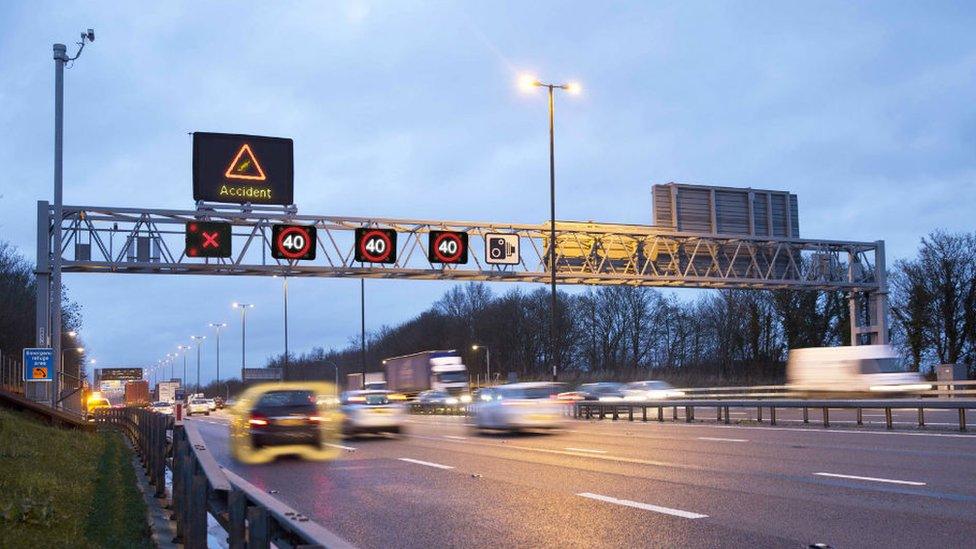Smart motorways: M1 year-long upgrade work to cause driver disruption
- Published

In April, the government announced the building of all new smart motorways had been cancelled due to cost and safety concerns
Drivers have been warned of disruption to their journeys for more than a year as emergency stop sections are added to a section of smart motorway.
National Highways said it was creating new places to stop on the M1 in South Yorkshire between J32 for Thurcroft and J35a at Stocksbridge.
The left-hand lane will be shut throughout the construction work, with other lanes under a 50mph speed limit.
National Highways said it would "minimise disruption wherever we can".
"Work to install the roadworks will begin in the next few weeks, with main construction beginning shortly afterwards," a spokesperson said.
"It is expected to be complete by winter 2024."
The move follows complaints about the distance between emergency areas on smart motorways.
In April, the government announced the building of all new smart motorways had been cancelled due to cost and safety concerns.
Reacting to the disruption, Labour MP for Rotherham Sarah Champion said: "Whilst I'm glad our campaigning is finally getting National Highways to recognise how deadly 'smart' motorways are, rather than reinstating the hard shoulder, we will now have months of disruption as they retrofit the refuges that should have been built in the first place."

What is a smart motorway?
There are three main types:
controlled, which have a permanent hard shoulder, but use technology such as variable speed limits to adjust traffic flows
dynamic, where the hard shoulder can be opened up at peak times and used as an extra lane; when this happens, the speed limit is reduced to 60mph
all-lane running, where the hard shoulder has been permanently removed to provide an extra lane; emergency refuge areas are provided at regular intervals for cars that get into trouble
All three models use overhead gantries to direct drivers. Variable speed limits are introduced to control traffic flow when there is congestion, or if there is a hazard ahead. These limits are controlled by speed cameras.

Follow BBC Yorkshire on Facebook, external, Twitter, external and Instagram, external. Send your story ideas to yorkslincs.news@bbc.co.uk, external.
Related topics
- Published22 April 2024

- Published30 June 2019

- Published15 December 2022

- Published2 November 2021

- Published26 January 2020
